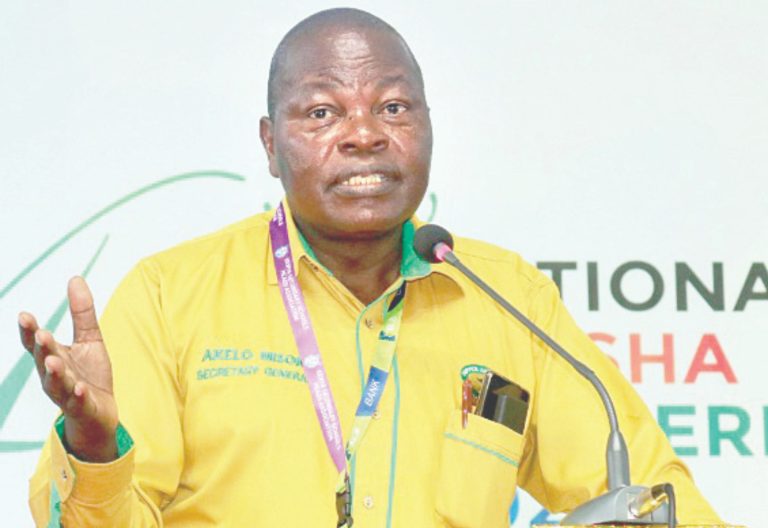Teachers’ union raise concern over transition to JSS
By Alvin Mwangi, January 17, 2025A teachers’ union has poured cold water on the roll-out of Grade 9 saying that the implementation of the Junior Secondary School (JSS) has been “terribly corrupted” and plagued by numerous problems and should be discontinued.
In a detailed press statement, the Kenya Union of Post Primary Teachers (Kuppet) questioned the government’s preparedness saying two weeks after schools reopened; the transition has been facing challenges ranging from infrastructure, human resources and books.
“Quite unfortunately, the government is employing emergency measures for JSS when it has an obvious solution to the teacher deficit. The retention of the Grade Nine class in primary schools has left secondary schools with empty classes and idle amenities including classrooms, laboratories, sports facilities and, even more importantly, teachers,” said acting-secretary general (Kuppet) Moses Nthurima.
Poor training
Shortage of facilities; classrooms, libraries and labs, lack of teachers and poor training have been major setbacks since the first learners under the Competency-Based Curriculum moved to JSS.
“The long-promised construction of classrooms, labs and other amenities in primary schools is way behind schedule – directly compromising the quality of learning in the schools. Paradoxically, more than 12,000 classrooms purposely built for JSS in all public secondary schools are lying idle,’ said Nthurima.
Kuppet says many teachers assigned to Junior Schools are either teaching for the first time thus taking time to adjust, or lack subject mastery in the areas they are tasked to handle due to a shortage of teachers.
“The deficit, which was predicted, is estimated at more than 80,000 currently. It comes despite the government’s recruitment/deployment of 70,000 teachers to JSS over the past two years, and the reduction of the number of learning areas at all the three JSS classes,’ said Nthurima.
The union said this has created a chaotic learning environment.
Kuppet officials also alleged discontent among JSS teachers due to poor pay and recommended a comprehensive assessment of JSS.
The union pleaded with the government to rethink the domiciling of JSS – starting with Grade Nine – in order to take advantage of economies of scale in secondary schools.
“We understand that the conundrum in JSS is due to the government’s determination to cut down on capitation funds sent to secondary schools. While the government is actually saving on such funds, the cost in lost learning far outweighs the gains,’ said Nthurima.
Secondary schools
Nthurima said with the current set-up, teachers in primary and secondary schools will have a lesser workload while those deployed to junior schools will have more they can handle while it is a reality that we have a deficit of teachers.
While junior schools grapple with inadequate infrastructure, secondary school principals are at a loss on what to do with empty spaces that have been left after Form Four students exited.
We have about 10,000 public secondary schools in Kenya, the majority being at the sub-county level.
Already, Members of Parliament (MPs)have raised the red flag over the government’s unpreparedness for junior schools.
The concerns by the union come even after the government seemed to agree that the toll out of grade 9 is having serious problems after Principal Secretary Education Belio Kipsang said that the government was considering the shift system of learning amid concerns over the construction of Grade 9 classrooms.
Kipsang stated that there are fewer classrooms to accommodate the learners and it will have to improvise to ensure that learning has not been disrupted.
Kipsang noted that some classrooms will be congested for 30 days as the Ministry works on constructing more.
“In some situations where the congestion will not allow, we can have a multi-shift within the time where when there is a class doing outdoor activity then another group can be optimizing the classroom,” he noted.
He added that the Ministry plans to use Sh16 billion to complete the construction of the classrooms. So far, Kipsang’ says that 13,500 classes have been completed out of the required 16,000.
CDF kitty
The Ministry is constructing 11,000 classes while the remainder will be built with the NG-County Development Fund (CDF) kitty.
According to Kipsang’, the ministry has constructed 10,500 classes and NG-CDF has built 3,000.
Furthermore, 9.9 million books have been distributed to different primary schools that domicile Grade 9 classes.
Likewise, the Teacher’s Service Commission (TSC) has posted 46,000 teachers who were on internship and another cohort of 20,000 teachers.
Kipsang however maintains that the number of teachers is still low and more should be onboarded to equate the number of learners.
Recently, President William Ruto assured parents that most of the teething challenges experienced at the onset of the rollout of the Competency-Based Curriculum have been resolved.
The Head of State said the government is working on resolving the few remaining challenges one by one without interfering with learning.
“I want to assure parents that all our children are in class. No child is out of Grade 9. We have constructed 13,000 new classrooms to ensure all our children have a place to learn to ensure we achieve CBC goals and align Kenya’s education standards with job market demands,” Ruto said.
Ruto said construction of the remaining 3,000 classrooms will be completed in due course but arrangements have been made to ensure learning is not interrupted.
“So, I want to assure all parents that the challenges that existed before we are tackling them step-by-step. We have hired 76,000 teachers to close the gap in the teacher-student ratio; we have constructed 13,000 classrooms to ensure that the transition to Grade 9 proceeds. The assurance by President Ruto comes even as parents have continued to complain about how Grade 9 has turned out to be an expensive affair for them ranging from books, uniforms and fees.
